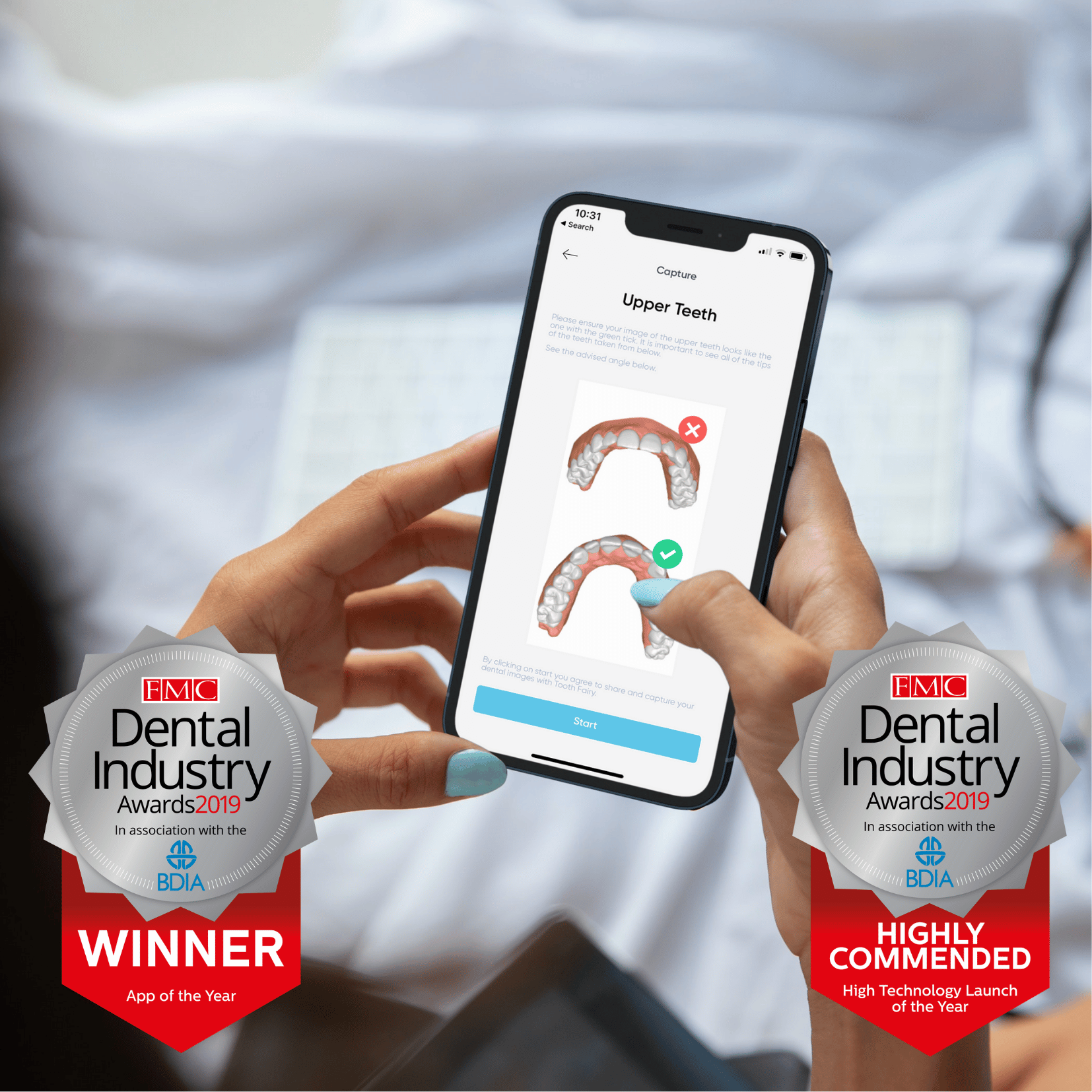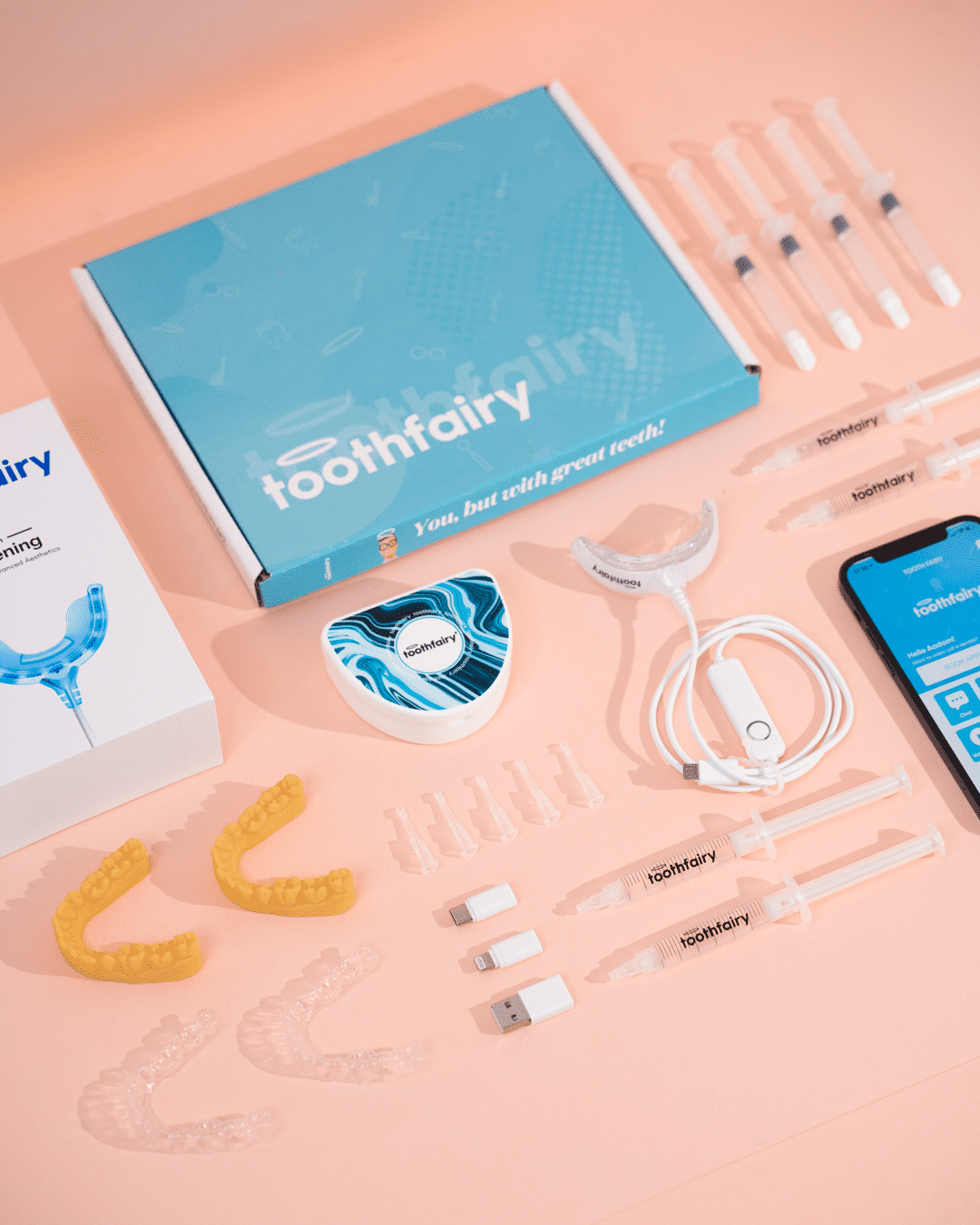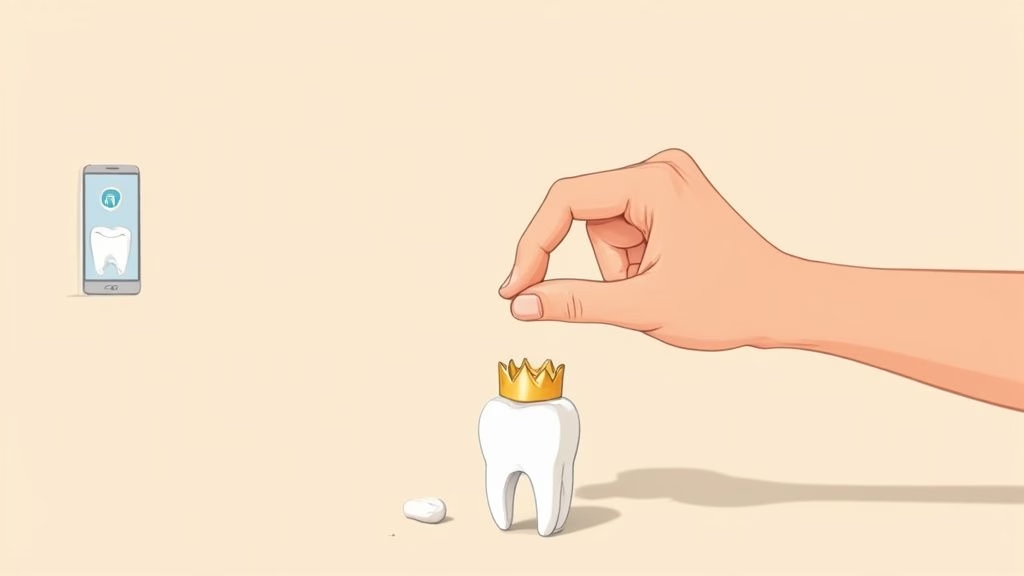8 Cheapest Ways to Straighten Teeth in the UK

Unlocking a Straighter Smile Without Breaking the Bank
Good dental alignment can make a difference in your confidence and self-esteem. But in the UK, traditional orthodontic treatments often come with hefty price tags that put them out of reach for many people. The good news is that teeth straightening has become much more accessible, with new options that fit different budgets and lifestyles.
Metal braces were once the only path to straighter teeth, requiring significant time and financial investment. Now, modern alternatives like removable clear aligners have made orthodontic treatment more flexible and affordable. The key to successful teeth straightening lies in gradually and comfortably shifting teeth into proper alignment while fitting treatment around your daily routine. Several factors affect both results and costs – including the complexity of your dental issues, your chosen treatment method, and your provider’s expertise.
This practical guide will help you explore budget-friendly teeth straightening options available in the UK. We’ll compare different approaches – from at-home aligner systems to traditional orthodontics – and break down their pros, cons and costs. You’ll learn how to:
- Evaluate treatment providers and their credentials
- Understand available payment plans and financing
- Find ways to make treatment more affordable
- Make informed decisions about your dental care
Whether you’re researching options through your employee benefits, looking for convenient at-home solutions, or seeking the most cost-effective path to a straighter smile, this guide will empower you to take the next step. We’ll help you understand your choices so you can achieve the smile you want without compromising your financial wellbeing.
1. At-Home Clear Aligners
At-home clear aligners have revolutionised teeth straightening by offering an affordable alternative to traditional braces. These custom-made clear plastic trays gradually shift teeth into proper alignment over several months. Their subtle appearance and remote monitoring make them popular among busy people who want a less noticeable solution.
The process starts with either an online assessment or an at-home impression kit. After making impressions of your teeth, a personalised treatment plan is created. A series of aligners is made and shipped to your home. You switch to new aligners every few weeks as your teeth progressively move into position.
The growth of at-home aligners stems from improvements in 3D printing and teledentistry technology. These advances allow precise aligner manufacturing and remote progress tracking. While traditional braces remain essential for complex cases, at-home aligners meet the needs of those with milder alignment issues.
Key Features:
- Remote Progress Tracking: Most providers use apps and photo check-ins to monitor treatment remotely
- Complete Home Treatment: The entire process happens at home, from impressions to final aligners
- Clear Custom-Fitted Aligners: Nearly invisible trays provide discreet teeth straightening
- 4-12 Month Treatment Time: Duration varies based on individual needs
Benefits:
- Cost-Effective: £1,500-£3,000 in the UK, much less than traditional braces
- Nearly Invisible: Clear trays blend naturally with teeth
- Removable: Take out aligners for eating, drinking and cleaning
- No Office Visits: Perfect for busy schedules
Limitations:
- Not for Severe Cases: Complex alignment issues need traditional braces
- Requires Dedication: Must wear 20-22 hours daily
- Less Professional Oversight: Fewer in-person checkups
- Potentially Longer Treatment: May take more time than office-based options
UK Providers:
- Toothfairy
- SmileDirectClub
- AlignerCo
Success Tips:
- Take clear, accurate impressions and photos for proper aligner fit
- Wear aligners 20-22 hours every day without fail
- Keep aligners clean and sanitised
- Follow your treatment schedule exactly as prescribed
For people seeking an affordable and convenient way to straighten their teeth, at-home clear aligners offer a practical solution. While not suitable for everyone, their growing popularity shows strong demand for flexible teeth straightening options. If you have mild to moderate misalignment and want a budget-friendly approach that fits your lifestyle, at-home aligners could be right for you.
2. Dental Schools
Dental schools provide an excellent option for UK residents looking to straighten their teeth without breaking the bank. At these institutions, dental students perform teeth straightening procedures under close supervision from experienced orthodontists. This setup results in significant cost savings compared to private practices.
These schools offer complete orthodontic services, from traditional metal braces to clear aligners. You’ll likely find a treatment option that matches your specific needs. The care includes regular check-ups and adjustments to keep your treatment on track. Since these are teaching facilities, they often use modern equipment and techniques, giving patients access to quality care.
Why choose a dental school? As private orthodontic costs continue rising, more people are exploring budget-friendly options. Dental schools create a win-win situation – patients receive quality care at lower prices, while students gain hands-on experience in a controlled setting.
Features and Benefits:
- Expert oversight: Licensed orthodontists carefully monitor all student work, ensuring safe, high-quality treatment
- Multiple treatment choices: Schools typically offer various teeth straightening methods to suit different needs
- Consistent monitoring: Regular appointments help track progress and make needed adjustments
- Teaching environment: Access to current orthodontic methods and technologies
- Detailed care: Students take extra time to ensure precise, careful treatment
Pros:
- Save 40-60% compared to private practices: Makes teeth straightening more affordable for many people
- Quality treatment: Combines student dedication with professional supervision
- Modern methods: Access to current orthodontic advances
Cons:
- Longer appointments: Students work more slowly while learning
- Limited scheduling options: Must work around school calendars
- Extended treatment time: Learning curve may increase overall duration
- Distance issues: School location might require significant travel
Tips for Choosing a Dental School:
- Check credentials: Select a school with a properly accredited orthodontic program
- Plan for extended visits: Allow extra time for student-performed procedures
- Explore payment options: Many schools offer flexible ways to pay
- Start early: Wait lists can be lengthy, so schedule initial visits well in advance
Consider these factors carefully when deciding if dental school treatment fits your needs. For many UK residents, it offers an excellent way to achieve straighter teeth while keeping costs manageable.
3. Dental Insurance with Orthodontic Coverage
Getting straighter teeth can be expensive. Dental insurance with orthodontic coverage helps make treatment more affordable, which is why it deserves inclusion in this guide. With the right dental plan, you can substantially reduce the cost of teeth straightening.
The key is finding insurance plans that specifically cover orthodontic treatment like braces or clear aligners. While orthodontic coverage isn’t new, more people are seeking it out as teeth straightening becomes more common and the long-term oral health benefits are better understood.
How it Works:
These plans typically provide an annual benefit amount for orthodontic treatment, along with a lifetime maximum benefit. For example, a plan might offer £1,500 per year towards treatment with a lifetime maximum of £3,000. Understanding these limits is essential for planning your budget.
Features and Benefits:
- Coverage for traditional braces or aligners: Choose the treatment option that works best for you
- Annual benefit maximums: Helps reduce your direct costs significantly
- Network providers: Access to qualified orthodontists in the insurance network
- Retainer coverage: Many plans include post-treatment retention phase
Pros:
- Lower out-of-pocket costs: Makes treatment more financially manageable
- Predictable payments: Helps with budgeting and planning
- Quality providers: Insurance networks maintain standards for orthodontists
- Retainer coverage: Supports maintaining results long-term
Cons:
- Monthly premiums: Consider premium costs versus potential savings
- Benefit limits: Annual and lifetime maximums restrict total coverage
- Network restrictions: May limit orthodontist choice
- Limited cosmetic coverage: Purely cosmetic treatment may not qualify
Real-World Example:
Consider two people in the UK needing teeth straightening. One pays £3,000-£5,000 out-of-pocket for aligners. The other uses insurance that covers £1,500 annually, significantly reducing their total cost.
Tips for Maximising Your Benefits:
- Compare plans carefully: Look beyond premiums to understand orthodontic benefits, maximums and networks
- Time your treatment: Start at the beginning of your benefit year to maximize annual coverage
- Check lifetime limits: Important if future orthodontic work may be needed
- Verify coverage details: Confirm exactly what’s covered before starting treatment
By understanding these aspects, UK residents can use dental insurance with orthodontic coverage to make teeth straightening more affordable while still getting quality care and lasting results.
4. Payment Plans and Financing
Getting straighter teeth requires an investment, but it doesn’t have to create financial stress. Payment plans and financing make orthodontic treatment more accessible in the UK by spreading costs over time – making this a smart option for affordable teeth straightening.
Most plans break down the total cost into smaller monthly payments. They often include quick approval, flexible payment terms, and sometimes interest-free periods. This means you can start treatment right away rather than waiting to save the full amount. For instance, someone getting clear aligners might pay over 24 months, making each payment much more budget-friendly.
Major healthcare financing companies have helped make dental payment plans common and accessible. Specialist orthodontic financing companies now offer plans specifically designed for teeth straightening treatments, giving patients more options than ever before.
Pros:
- Start treatment immediately: Begin your smile journey without saving the full amount first
- Budget-friendly payments: Split costs into predictable monthly amounts
- Interest-free options available: Some plans have no-interest promotional periods
- Multiple financing choices: Compare different plans to find your best fit
Cons:
- Credit checks required: Your credit score affects approval and rates
- Post-promotional interest: Rates may increase after introductory offers end
- Extended commitment: Monthly payments continue for the full plan term
- Possible higher total cost: Interest charges can increase the overall expense
Tips for using payment plans:
- Compare rates: Check offers from multiple providers
- Find 0% promotions: Use interest-free periods when possible
- Review all terms: Understand the full agreement and fees
- Calculate total cost: Know the final amount, including all interest
By understanding payment plan options and following these practical tips, you can make smart choices about financing your teeth straightening treatment. Have a detailed discussion with your orthodontic provider about available plans that match your specific needs and budget.
5. Traditional Metal Braces
Traditional metal braces have earned their place as one of the most cost-effective ways to achieve straighter teeth, particularly for patients needing extensive correction. These time-tested appliances work by attaching small stainless steel brackets directly to the teeth, connected by wires that apply gentle pressure to gradually shift teeth into proper alignment. Their proven success rate and budget-friendly pricing make them a popular choice in the UK.
How They Work and Their Evolution:
Metal braces have seen major improvements since their early days over 100 years ago. The bulky bands that once wrapped around each tooth have been replaced by small brackets bonded directly to tooth surfaces. Modern materials like stainless steel offer excellent durability at reasonable costs. Today’s advanced nickel-titanium wires provide more precise, comfortable tooth movement with shorter treatment times.
Features and Benefits:
- Strong Stainless Steel: The brackets resist staining and damage while reliably moving teeth
- Regular Fine-Tuning: Your orthodontist adjusts the wires every few weeks to maintain optimal pressure
- Well-Tested Method: Decades of successful use treating various alignment issues
- Handles Complex Cases: Metal braces effectively correct severe bite problems and crowding that other options may not address
Pros:
- Most Budget-Friendly: Among the most affordable choices for full orthodontic treatment in the UK
- Treats Severe Issues: Strong enough to handle challenging alignment problems
- Consistent Results: Fixed design ensures steady tooth movement without relying on patient compliance
- Long-Lasting: Built to withstand daily wear and tear with minimal risk of damage
Cons:
- Obvious Look: Most visible type of orthodontic treatment
- Diet Limits: Must avoid foods that could damage brackets/wires (hard candies, sticky snacks, etc.)
- Frequent Checkups: Requires orthodontist visits every few weeks for adjustments
- Initial Discomfort: Some soreness expected, especially after wire changes
Practical Tips for Living with Metal Braces:
- Keep Teeth Clean: Brush and floss carefully after meals to prevent plaque buildup
- Watch What You Eat: Follow food guidelines to avoid damaging your braces
- Use Dental Wax: Apply wax to brackets that irritate your mouth
- Attend All Appointments: Regular adjustments keep treatment on schedule
Metal braces continue to be a reliable, accessible option for achieving straight teeth. Though more noticeable than alternatives, their reasonable cost and ability to fix complex alignment issues make them an excellent choice for many UK patients seeking orthodontic care. Your local orthodontist can provide specific details about treatment options and costs.
6. Limited Orthodontics
Limited orthodontics provides focused teeth straightening by targeting specific alignment issues rather than a full mouth transformation. This service stands out as a practical choice for those wanting to improve their smile’s appearance without extensive treatment, offering both cost savings and quicker results.
The treatment concentrates on adjusting only select teeth – typically the front ones most visible when smiling. Most patients complete treatment in 3-6 months, compared to 1-2 years for full orthodontics. This shorter timeline helps keep costs down, making it a practical option for many budgets.
How Limited Orthodontics Works
The process uses clear aligners to move targeted teeth into better position. Its growing adoption stems from increased interest in cosmetic dental improvements, better aligner technology, and patients seeking faster treatment options that fit their budget.
Common Treatment Cases
- Gap Closure: Fixing small spaces between front teeth
- Minor Crowding: Addressing slight overlap of visible teeth
- Rotation Correction: Straightening slightly turned front teeth
Key Benefits and Limitations
Benefits:
- Lower Treatment Cost: Significantly less expensive than full orthodontics
- Faster Results: Most cases complete within months
- Focused Improvement: Targets visible cosmetic concerns
- Simple Maintenance: Less intensive care required
Limitations:
- Partial Correction Only: Not for complex bite issues
- Cosmetic Focus: May not improve bite function
- Case Restrictions: Only suitable for minor alignment needs
- Future Treatment: May need comprehensive work later
Tips for UK Patients
- Know the Limits: Have detailed discussions with your orthodontist about realistic outcomes
- Consider Long-Term: Understand how partial treatment might affect future needs
- Review Options: Ask about potential effects of limited versus full treatment
- Get Expert Input: Consult multiple General Dental Council (GDC) registered orthodontists to compare approaches and costs
Making an informed choice about limited orthodontics requires careful consideration of your specific needs and goals, along with professional guidance from qualified dental experts.
7. Retainers for Minor Corrections

Retainers are one of the most affordable teeth straightening methods available in the UK. They work exceptionally well for addressing small dental alignment issues like minor crowding or gaps. This makes them a practical choice if you need slight smile improvements but want to avoid the higher costs of full orthodontic treatment.
These custom-made, removable appliances are designed to gently shift teeth into better positions. While retainers are typically used to maintain teeth alignment after braces, they can also make modest corrections on their own. This works particularly well for small relapses or minor shifts that occurred after previous orthodontic work.
Dentists discovered that the steady pressure from retainers could do more than just hold teeth in place – it could actually move them slightly over time. This opened up a more budget-friendly option for patients who only needed small adjustments rather than major realignment.
How Retainers Work for Minor Corrections
Your dentist takes detailed impressions or digital scans to create a retainer that fits your teeth perfectly. The retainer then applies carefully calibrated pressure to specific teeth, slowly guiding them into better alignment. Regular check-ups allow your dentist to monitor progress and adjust the treatment as needed.
Key Benefits:
- Easy removal: Take them out for meals, brushing, and special occasions
- Custom fit: Made specifically for your mouth and treatment needs
- Preventive effects: Stops existing minor misalignments from getting worse
Advantages:
- Budget-friendly: Much less expensive than traditional braces
- Simple cleaning: Remove to brush and floss normally
- Effective for small issues: Works well for minor spacing problems
- Maintenance: Helps keep teeth from shifting further
Limitations:
- Not for major cases: Only suitable for slight misalignments
- Limited scope: Cannot fix significant bite problems
- Compliance needed: Must be worn consistently
- Slower results: Takes longer than comprehensive treatment
Tips for Success:
- Follow instructions: Wear as directed by your dental professional
- Keep clean: Brush retainer daily to prevent bacteria growth
- Replace when needed: Get a new one if it becomes worn out
- Regular checks: See your dentist to track progress
Retainers offer an excellent low-cost option for fixing minor teeth alignment issues in the UK. While they can’t address every orthodontic problem, they work well for specific situations and help maintain previous treatment results. Talk with your dentist about whether retainers could help achieve your smile goals. They can evaluate your needs and recommend the most appropriate treatment approach.
8. HSA/FSA Accounts: Make Your Teeth Straightening More Affordable
Looking to make your teeth straightening treatment more budget-friendly? Health Savings Accounts (HSAs) and Flexible Spending Accounts (FSAs) can help UK residents reduce their orthodontic costs. These accounts let you set aside money before taxes for approved healthcare needs, including aligners and braces. You effectively get a discount by lowering your taxable income.
Understanding HSAs and FSAs for Dental Work
These accounts work by letting you contribute pre-tax money from your salary. When you need orthodontic treatment like teeth straightening, you can use those tax-free funds to pay for it.
Here’s an example: For a £3,000 treatment, using HSA/FSA funds while in the 20% tax bracket would save you £600 on taxes.
Key Differences Between HSAs and FSAs in the UK
While both provide tax benefits, there are important distinctions:
- HSAs are not common in the UK. Some health insurance plans offer similar benefits
- FSAs, available through employer “salary sacrifice” programs, are more widespread
- FSA funds typically expire yearly if unused, unlike HSAs which roll over
- Some employers add matching contributions to FSAs
Why Consider an HSA/FSA for Teeth Straightening
Using an FSA (the more common UK option) offers clear cost savings. You can combine this tax advantage with other payment options like dental plans to make treatment more manageable.
Benefits:
- Save 20-30% through reduced taxes
- Easy budgeting with predictable savings
- Works alongside other payment methods
Limitations:
- Yearly contribution caps apply
- FSA funds may expire if not used
- Must qualify for account access
Making the Most of HSA/FSA Benefits:
- Match contributions to expected treatment costs
- Align funding with your treatment schedule
- Save all receipts for documentation
- Review your specific plan rules carefully
A Growing Healthcare Payment Option
These accounts have become popular tools for managing medical costs. They help people control healthcare spending while reducing taxes. For orthodontic work like teeth straightening, they can make treatment far more affordable. Remember to consult a financial advisor about your specific situation and account eligibility.
8 Strategies for Affordable Teeth Straightening Comparison
| Method | Implementation Complexity 🔄 | Resource Requirements ⚡ | Expected Outcomes 📊 | Ideal Use Cases 💡 | Key Advantages ⭐ |
|---|---|---|---|---|---|
| At-Home Clear Aligners | Moderate – Requires self-monitoring compliance | Minimal in-office resources; home-based kits | Gradual teeth movement; effective for mild/moderate cases | Remote treatment; lifestyle flexibility | Lower cost; nearly invisible; removable trays |
| Dental Schools | Higher – Involves academic scheduling | Supervised clinical environment; extended appointments | High-quality, well-monitored care (slower pace) | Budget-conscious patients seeking quality care | Cost savings; expert oversight; latest techniques |
| Dental Insurance with Orthodontic Coverage | Moderate – Coordination with plan policies | Dependent on chosen plan and network considerations | Predictable cost reduction; partial or full treatment coverage | Insured individuals; planned treatment scheduling | Reduced out-of-pocket expenses; access to qualified providers |
| Payment Plans and Financing | Variable – Requires credit checks and agreements | Financial arrangements; manageable monthly payments | Immediate access to treatment; potential higher long-term cost | Patients needing upfront affordability | Flexible payment terms; possibility of interest-free options |
| Traditional Metal Braces | High – Frequent adjustments and strict appointments | Regular in-office visits; durable materials | Comprehensive correction; highly effective for severe cases | Complex cases needing full orthodontic treatment | Most affordable comprehensive option; reliable results |
| Limited Orthodontics | Low – Focused and shorter treatment sessions | Lower overall resources; targeted intervention | Partial correction addressing key cosmetic issues | Minor alignment corrections; focused treatment goals | Reduced treatment time; lower cost |
| Retainers for Minor Corrections | Very Low – Simple, removable appliance usage | Minimal; low-cost custom-fitted device | Minor adjustments; prevents further shifting | Minor crowding or spacing issues | Very low cost; ease of use; minimal invasiveness |
| HSA/FSA Accounts | Low – Requires administrative planning | Utilises tax-advantaged savings accounts | Reduces taxable income; effectively lowers treatment cost | Individuals with available HSA/FSA funds | Tax savings; predictable cost reduction |
Achieving Your Perfect Smile Affordably
Getting straighter teeth in the UK is now more accessible thanks to several cost-effective options. Whether you’re considering at-home aligners, traditional braces, retainers, or treatment at dental schools, there are choices to match different budgets and needs. Success comes from carefully evaluating your specific situation, goals, and finances to find the best fit.
When exploring teeth straightening methods, take time to research thoroughly. Compare important factors like costs, treatment length, and level of dental supervision for each option. Speaking with multiple dentists can provide valuable perspectives to help create your personalised treatment plan.
Your daily routine may need some adjustments based on your chosen treatment. Following your dentist’s guidance precisely – whether that means proper cleaning with braces or consistent aligner wear – is essential for the best results. Stay informed about developments in dental treatments, as new technologies are expanding options for monitoring and personalising care plans remotely.
Key Takeaways:
- Multiple Options Available: Various affordable teeth straightening solutions exist to fit different needs
- Personalised Solutions: Treatment choice should align with your specific requirements and budget
- Research is Critical: Compare options and get professional input before deciding
- Follow Instructions: Consistent adherence to treatment guidelines ensures success
Want to straighten your teeth without excessive costs? Toothfairy provides an affordable and convenient solution through our digital platform. Get personalised treatment plans with clear aligners and safe whitening options, all overseen by qualified dentists. Access expert dental care from home whenever you need it, including emergency services via secure video calls. We also help businesses improve employee dental health. Begin your journey to a confident smile today – visit https://www.toothfairyapp.co.uk.
Last updated on August 22, 2025

Toothfairy Care Team
Toothfairy, is the world's smartest dental app, that connects patients to a dentist for a range of issues, from emergencies, cosmetics, prescriptions to virtual exams.
Toothfairy Care Team
Toothfairy, is the world's smartest dental app, that connects patients to a dentist for a range of issues, from emergencies, cosmetics, prescriptions to virtual exams.





